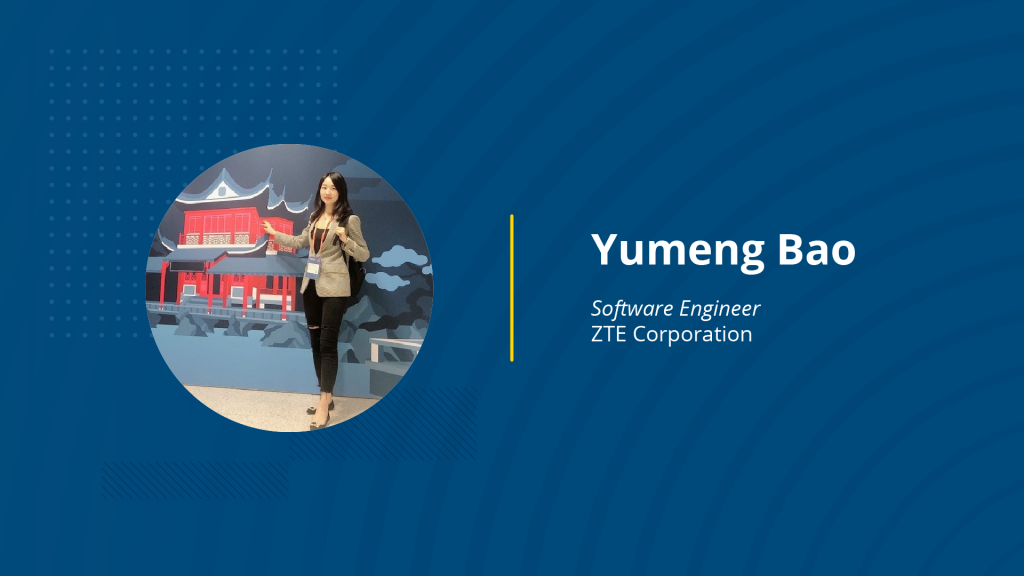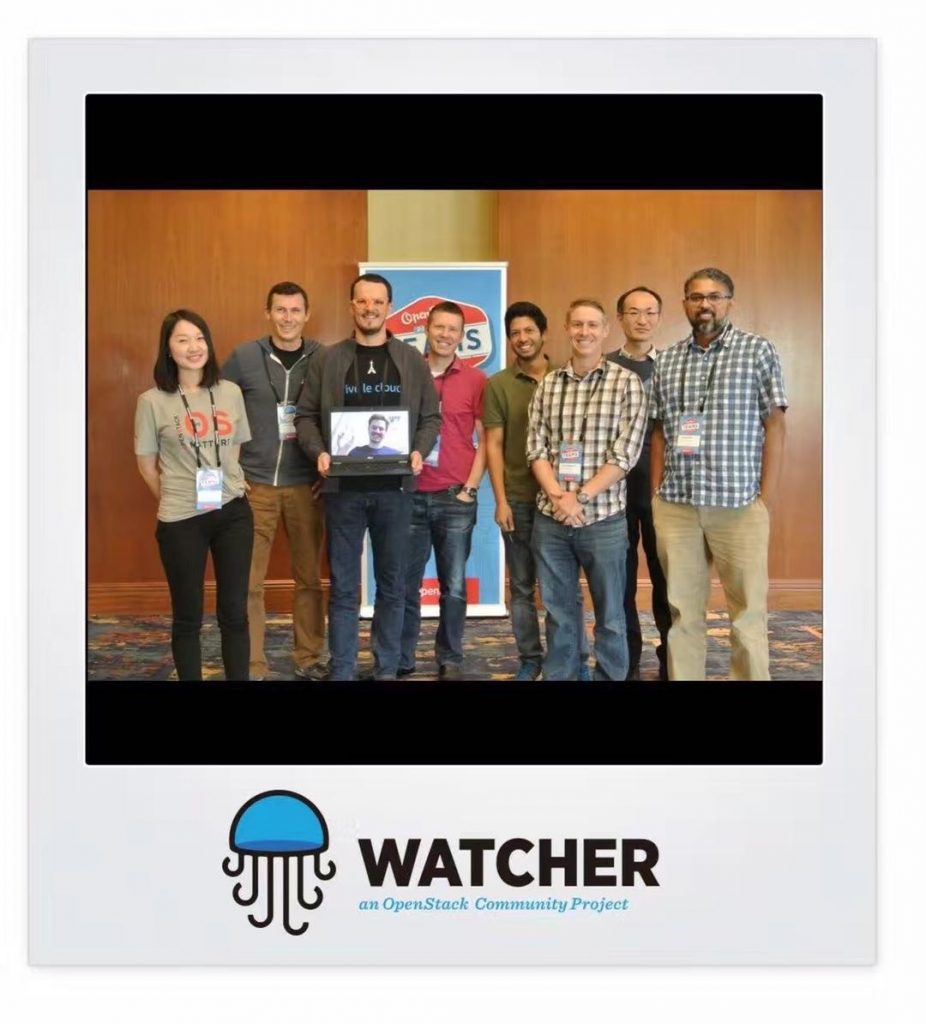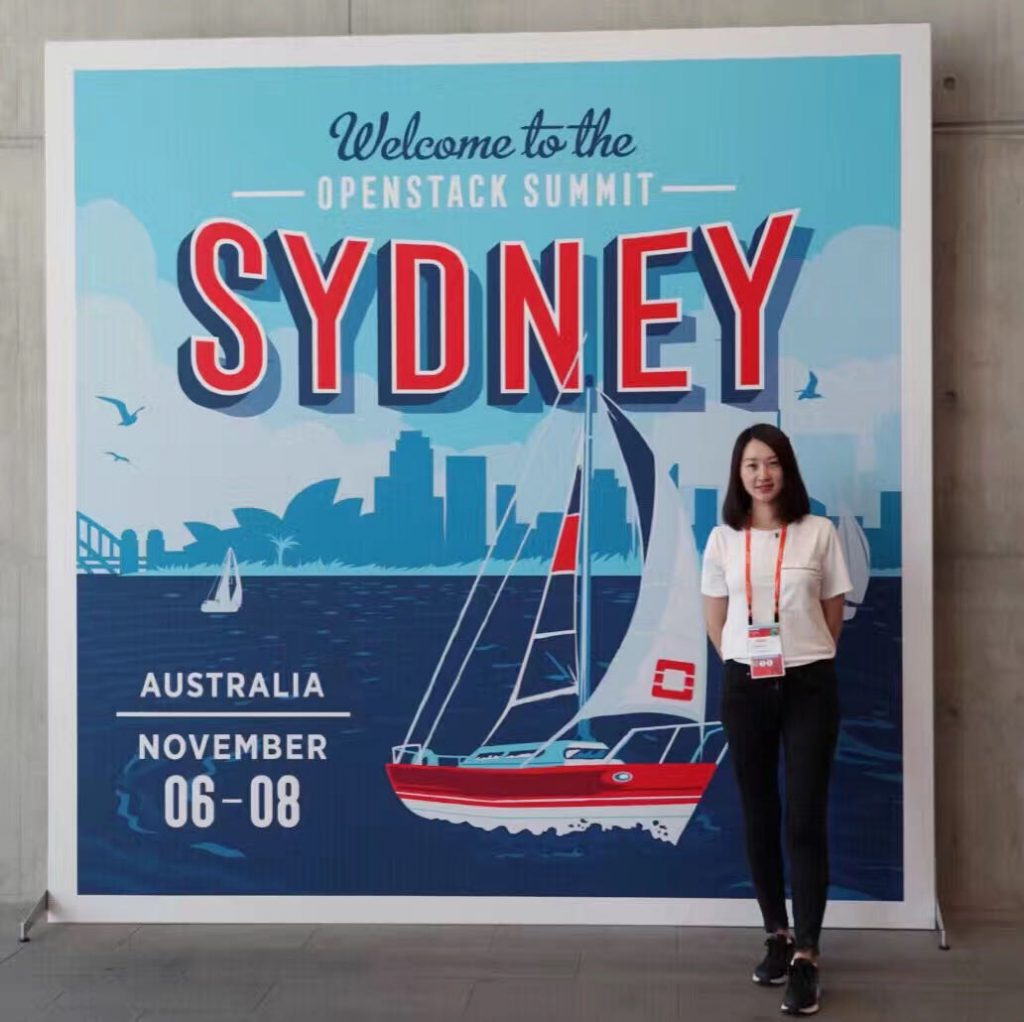
Storytelling is one of the most powerful means to influence, teach, and inspire the people around us. To celebrate OpenStack’s 10th anniversary, we are spotlighting stories from the individuals in various roles from the community who have helped to make OpenStack and the global Open Infrastructure community successful.
Here, we’re talking to Yumeng Bao from ZTE Corporation. She tells the community about how she got started with OpenStack and her favorite memory from the last 10 years of OpenStack.

How did you get started working with OpenStack and what are you doing now?
Four years ago, I was standing at a crossroads in my life. At that time, I was about to graduate from the University of Leeds in the UK with a master’s degree in electronic engineering, thinking whether to pursue a Ph.D. in the academic area or land my job in the industry area as an OpenStack software engineer.
Since I had done my research master’s degree, I was quite familiar with what a Ph.D. would be doing. However, Cloud Computing and OpenStack were totally fresh to me, which therefore sparked my interest in digging more. After searching cloud computing trends, reading blogs, watching many OpenStack Summit videos taken in 2012-2015 including keynotes, panel discussions, case studies shared by notable companies and institutions, what resonated with me the most were the magic strength of open source, the promising future of cloud computing, and the uniqueness of OpenStack. I fell in love with cloud computing and OpenStack. So I took the job as an OpenStack software engineer offered by ZTE and started my contribution to the OpenStack community.

During the past four years, I grew up with OpenStack from a junior engineer to a senior engineer, contributed to OpenStack Watcher and Cyborg projects (accelerator management), and now served as a core reviewer in Cyborg project and ex-core reviewer in Watcher project.
What is your favorite memory from the last 10 years of OpenStack?
What impressed me the most was “open.”
The community is open to anyone. As a developer, every single line code you contributed can be reviewed by others, that really means a lot to me especially sometimes when my patchsets got reviews from experienced contributors and notable technical core members. Their pertinent comments and suggestions not only guided me on feature implementation, but also helped me deep dive into OpenStack ecosystem technologies, and in building graceful coding habits and systems thinking skills.

Besides that, OpenStack Summit (newly named Open Infrastructure Summit) happens every year since 2012. This provides an open and efficient social channel for companies to get feedback from customers, operators to share their experience, and developers to discuss their plans face-to-face. I met lots of peers there and made quite a few good friends when I was attending the Atlanta, Dublin PTGs, the Boston, Sydney, Shanghai Summits, and the Wuhan, Beijing Hackathons held in mainland China.
Thirdly, OpenStack is quite open to all kinds of new challenges. Challenges include not only the technical revolutions but also black swan events that happened to some OpenStack membership companies. OpenStack has kept its good sense in seeking possible solutions and led the community in a good direction.
How did you contribute to the OpenStack community?
As an upstream developer, I started contributing to the resource optimization project OpenStack Watcher since the Ocata release in 2016.
At that time, I was participating in solving an energy-saving requirement from CMCC, how to fulfill user network application requirements with minimal energy consumption given the changing network traffic workloads. We finally found a solution with OpenStack Watcher, and it was tested effectively in helping telecom operators save energy and reduce cost of data center. Later, I shared this case in a session at the Boston Summit and contributed the solution to the Watcher project. After one and a half year’s contribution to Watcher, I shifted my research direction to accelerator management service and started contributing to Cyborg from the Rocky release in 2018. Ever since that, I contributed in cyborg-tempest-plugin, cyborg-specs, cyborg APIs, api-ref, GPU driver improvement, as well as tests in real production env which is urgently needed by quality insurance of Cyborg and its integration with Nova.
What advice do you have for the Stacker community and other growing open source communities based on your experience with OpenStack?
In terms of suggestions for Stackers and other open source communities, I’m not an expert on this. But from a contributor’s perspective, I would strongly recommend “keep open and ensure the quality.” Keep open is for cross-project efforts, as a newly born project, my project encountered a problem when we were trying to push integration with nova (no offense) to implement the feature of creating an instance with accelerators. As the Cyborg project itself is not mature yet, we’ve got doubts and concerns from Nova. And our solution was to find familiar people who work in Nova and help push the progress. This situation is well understood but probably may slow down the thrift of newly born projects like Cyborg. I hope the community can keep open to newly born projects, help them design a good architecture, and speed up their growth. Maybe a Technical Committee (TC) member who can talk to will be helpful in those cross-project efforts? And yes, one more important thing is that any new project itself cannot ensure the quality too much.
If I were to ask you in 2030, what do you think the OpenStack update will be?
Technologies are changing, but a stable release is also important for the industry.
In China, telecommunications giants adopted OpenStack, and several leading internet companies such as Tencent, Baidu, Bytedance use OpenStack either as their internal infrastructure or develop their private product based on OpenStack. Also, some financial organizations deploy OpenStack. For industries like telecom and financial, stability is more important than technological updating speed. However, things are different for internet companies, where efficiency is life.
With the growth of the maturity and stability of OpenStack, I think OpenStack is able to go to more industries and help more traditional industries who are seeking a digital transformation.
Even in the areas which OpenStack already in, there will be new opportunities. Take education, for example, many universities in China recently opened the subject cloud computing as a majority for computing science degrees, which may have many training and research projects.
Get Involved
If you’re interested in being featured to tell your stories about OpenStack, please email [email protected].
Follow the #10YearsofOpenStack hashtag on Twitter and Facebook and share your favorite memories of OpenStack with us!
Follow us on
Twitter: twitter.com/OpenStack
Facebook: facebook.com/OpenStack
WeChat ID: OpenStack










Leave a Reply